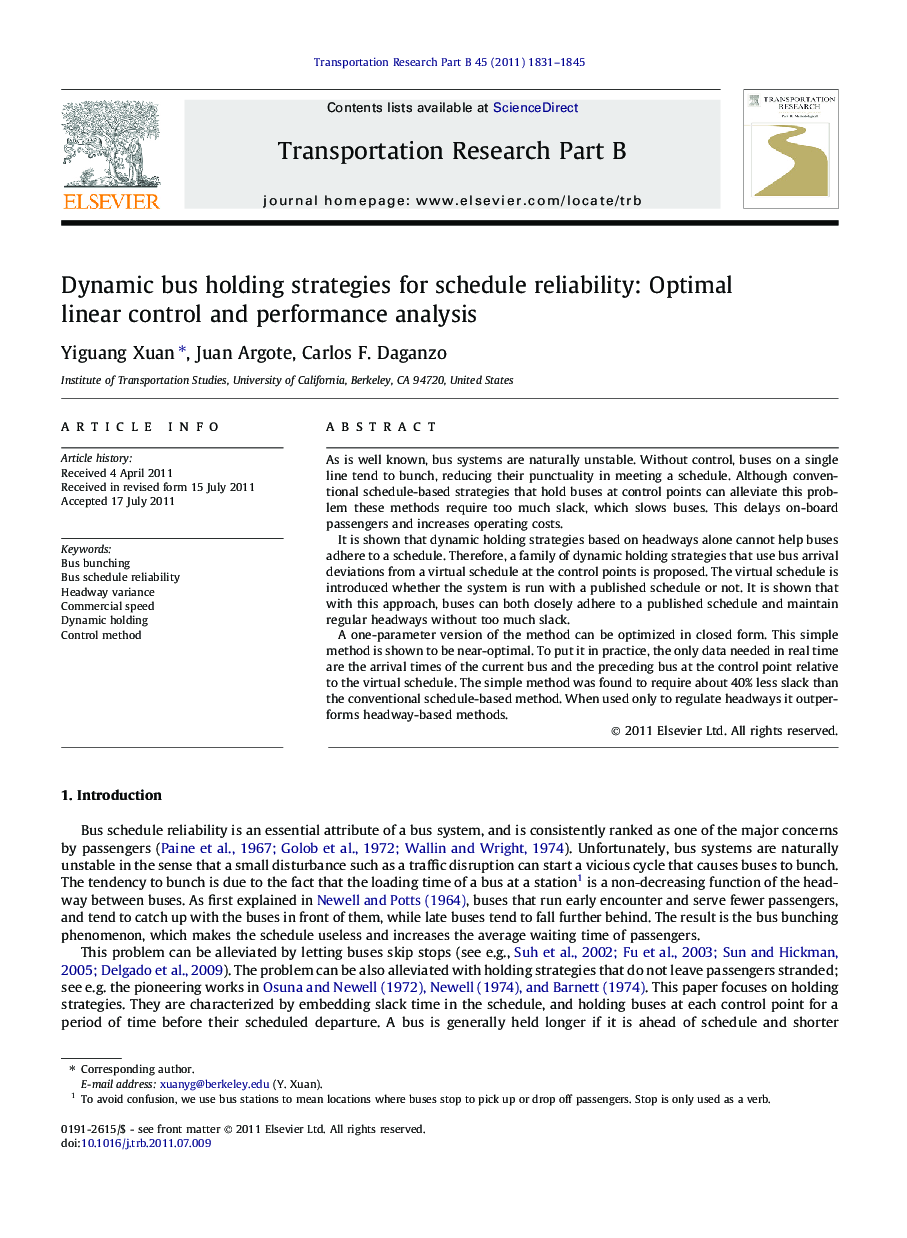| Article ID | Journal | Published Year | Pages | File Type |
|---|---|---|---|---|
| 1132321 | Transportation Research Part B: Methodological | 2011 | 15 Pages |
As is well known, bus systems are naturally unstable. Without control, buses on a single line tend to bunch, reducing their punctuality in meeting a schedule. Although conventional schedule-based strategies that hold buses at control points can alleviate this problem these methods require too much slack, which slows buses. This delays on-board passengers and increases operating costs.It is shown that dynamic holding strategies based on headways alone cannot help buses adhere to a schedule. Therefore, a family of dynamic holding strategies that use bus arrival deviations from a virtual schedule at the control points is proposed. The virtual schedule is introduced whether the system is run with a published schedule or not. It is shown that with this approach, buses can both closely adhere to a published schedule and maintain regular headways without too much slack.A one-parameter version of the method can be optimized in closed form. This simple method is shown to be near-optimal. To put it in practice, the only data needed in real time are the arrival times of the current bus and the preceding bus at the control point relative to the virtual schedule. The simple method was found to require about 40% less slack than the conventional schedule-based method. When used only to regulate headways it outperforms headway-based methods.
► A new strategy allows buses to adhere to a schedule despite traffic disturbances. ► With the proposed method, buses can also keep regular headways. ► The method only uses one control parameter and readily available real-time data. ► Recipes are given to maximize bus speed subject to a punctuality constraint. ► A user’s extra waiting and travel time due to bunching can be nearly cut in half.
